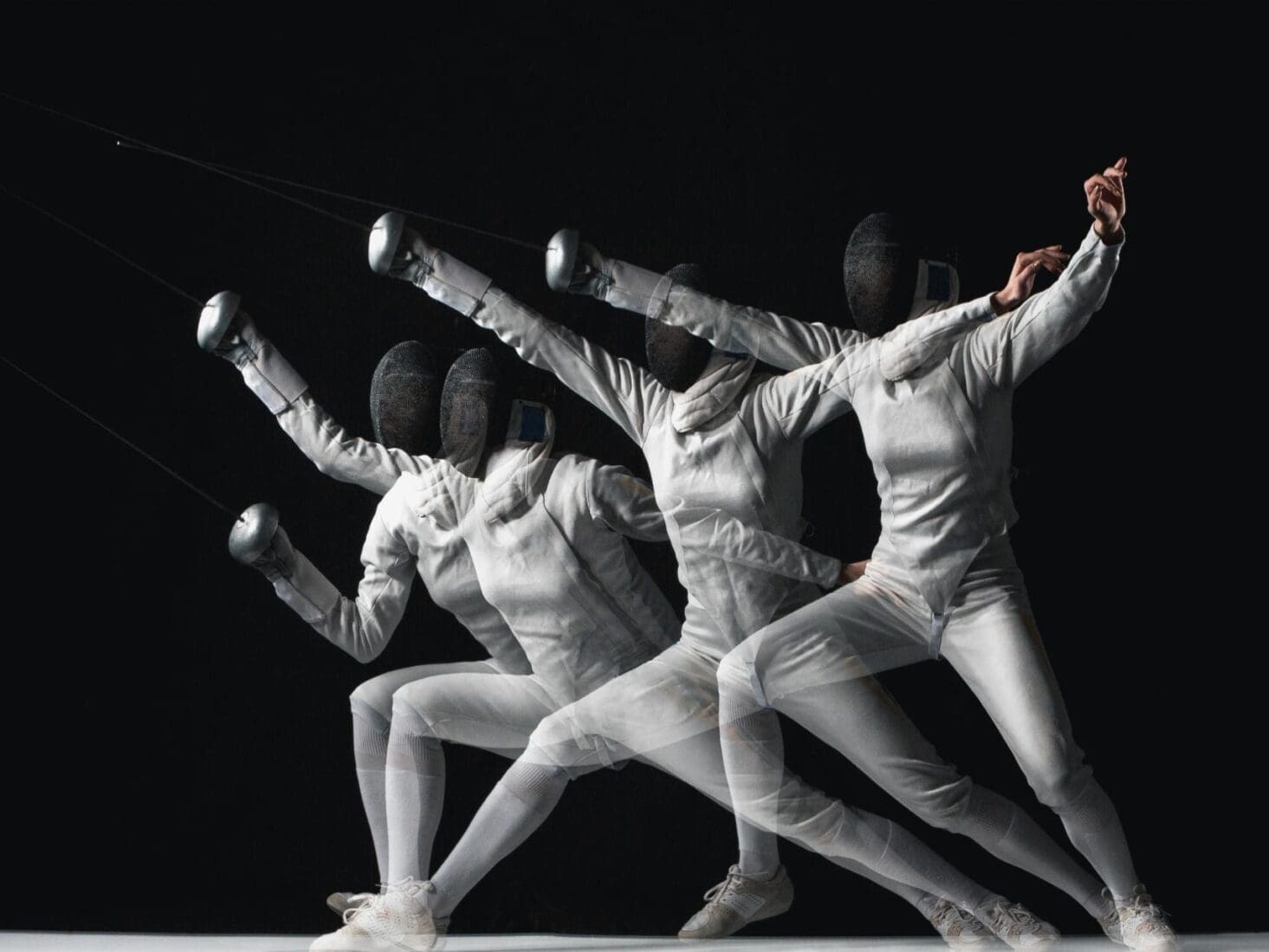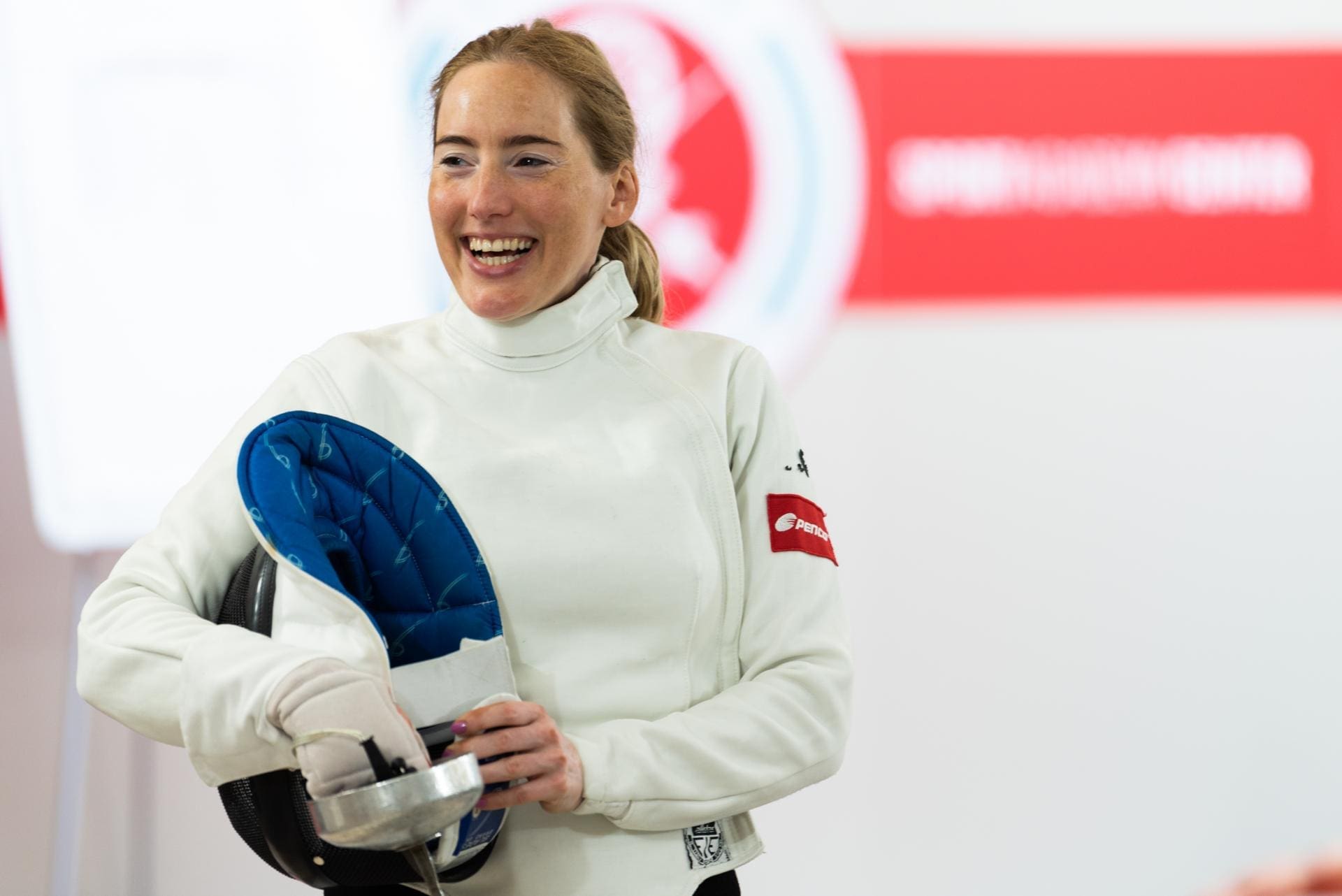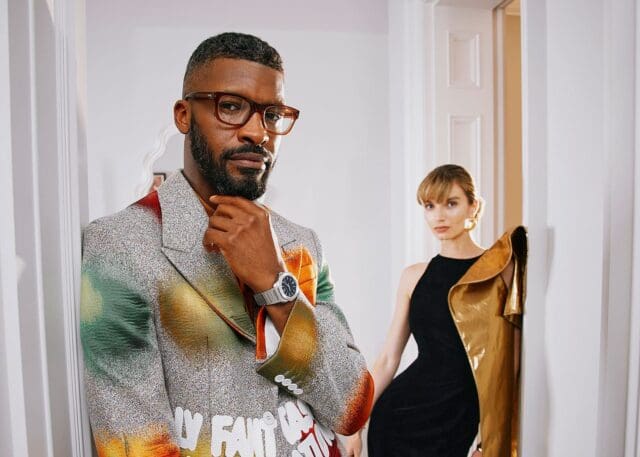
En garde! Everything you need to know about the art of fencing – and why you should give the sport a go
Fencing is one of only five sports that have featured in every Olympics since the modern games were founded in 1896
“Raise your épée and salute your opponent,” says Julianna Révész, a multiple World Fencing Champion and cofounder of the Knightsbridge Fencing Club. En garde is called, I pull my mask over my face, and take a few steps back.
“Fence,” cries Révész. It’s the ninth point. Sweat is pouring from under my mask, my vision, concealed by the mesh, blurs in and out of focus, as the tip of my brother’s épée glides past mine and plunges the blade hard into my chest. The scoreboard lights up. “5 – 4,” says Révész, “Unlucky.”
Even as complete novices, we can feel a physical and psychological element to fencing – both elevate and drain you. Indeed, I’d argue that there are few sports that require this much concentration.
“The goal is to outsmart your opponent, like a game of chess,” says Révész, as I collapse, exhausted. “You must have a strategy, a game plan, and you have to execute it perfectly.”
‘Fencing is the art of sword fighting,’ writes master fencer Nick Evangelista in The Art and Science of Fencing. “It has a proud tradition that stretches back hundreds of years. Kings and commoners both have engaged in fencing, which has been practised as both a skill for killing and a sport.”
While swordsmanship and sword fighting schools have been traced back to the 12th century – with records even suggesting the Ancient Egyptians practised a similar pastime – fencing as we know it today has its foundations in Renaissance Italy.


The sword had always stood as a symbol of masculinity, nobility and pride, but its migration from a weapon to a sport lies heavily on the shoulders of one Domenico Angelo, who, in the mid-18th century, opened Angelo’s School of Arms at Carlisle House, London, and began teaching the British aristocracy, the Royal Family, and, curiously, the children of composer Johann Sebastian Bach, the art of fencing. It was Angelo’s dedication in focusing on fencing’s poise, grace and skill that ultimately turned it into a modern sport.
Today, there are three forms of fencing. “Épée, foil and sabre,” explains Révész. “At the Knightsbridge Fencing Club, we practise épée, which means that the whole body is the target; you can hit from head to toe. Sabre is a slashing sport, and only for the upper body. And foil is only the torso and back; no limbs or head. Épée is very simple, you hit your opponent and you get a point.”
At competition level, fencers compete to 15 points, comprising a total of three three-minute bouts, with a one-minute break between each. The sport may have been modernised by way of electronic blade tips for accurate scoring, but the épée itself remains true to its barbaric beginnings. Révész revels in telling me that the small channel that runs the entire length of the épée was originally used to funnel blood away when duelling. She also adds that the uniforms are white because when the sport began, the tips were dipped in ink so judges could see where fencers had been hit.
Foil and sabre were inaugurated into the first modern Olympic Games in 1896, with épée joining in 1900. “Most [top-level] fencers today are European,” says Révész, “because it’s traditionally a European sport – but it’s getting bigger and bigger in the UK.”
At the Knightsbridge Fencing Club, the next generation of fencers is in the making. Many of its 150 members are children, and it was recently awarded the highly-contested Cutler Prize for raising a European Silver Medallist in the Cadet (13-17 years old) category, and for training multiple British Youth Champions. In fact, it was after the huge success of smaller taster classes in nearby schools that Révész founded the Knightsbridge Fencing Club with fellow fencing champion Tamás Kovás in 2009.

Today, Révész and Kovás run classes every day for every type of competitor, from those trying fencing for the first time, like us, to those with an eye on international competitions. One club member represented Switzerland at the Rio 2016 Olympics before returning to London to study at Imperial. He now works in hedge-fund management and trains with the team in his spare time. I ask Révész who her typical adult members are.
“We have many who come with fencing on their bucket list; people who have always just wanted to try it. More and more adults are taking up the sport, and it’s amazing to see just how talented some of them become.”
Raised in Budapest, Hungary, a city famed for producing fencing protégés, Révész was nine years old when she first tried the sport. “When I went to the first session, I knew this is what I wanted to do. I loved it. I loved the atmosphere. I loved the coaches, the fencers, everything. It was like a family.”
By the age of 13 she had been selected to join the National Team and competed at her first World Championships; by 2002 she was ranked the world number one junior and amassed numerous national and international championship victories.
“I’ve just returned from a two-year break after the birth of my child and will be heading to my first [post-childbirth] competition soon,” she says. “The goal was always to become an Olympic Champion, and my dream was set on Tokyo 2020.”
All weekday and weekend fencing sessions are held at St. Luke’s Church Hall, Earls Court, where both private and group classes are available. In the final week of May and August, Knightsbridge Fencing Club also runs a week-long academy at the five-star Forte Village Resort in Sardinia. A sport that requires quick-wittedness, stamina and agility, I highly recommend giving fencing a go, especially if you’ve never done so before. You never know; under the tutelage of Révész, you may just develop into Team GB’s next Olympic champion.
The Kensington Fencing Club is now offering private lessons online, please visit knightsbridgefencingclub.com









